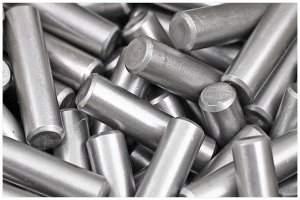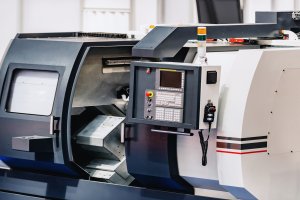The Mini Lathe Unveiled: Your Workshop’s Creative Powerhouse
The mini lathe is a transformative tool for hobbyists diving into precision machining and CNC machining. Compact yet capable, it turns raw materials—aluminum, brass, plastics, even mild steel—into functional and artistic creations. Unlike industrial giants, the mini lathe fits snugly in a home workshop, empowering makers to craft everything from custom pens to intricate mechanical parts. My first encounter with a mini lathe was a revelation: shaping a brass rod into a sleek keychain felt like unlocking a new level of creativity.
What is a Mini Lathe?
A mini lathe spins a workpiece against a cutting tool in a process called turning, enabling operations like facing (flattening ends), drilling, threading, and knurling (texturing for grip). Its core components include:
- Bed: The sturdy base ensuring stability.
- Headstock: Powers the spindle to rotate the workpiece.
- Tailstock: Supports long pieces or holds drill bits.
- Carriage: Guides the cutting tool with precision.
As a hobbyist, I found the mini lathe’s simplicity inviting. It’s not just a tool but a teacher, guiding you through the nuances of CNC machining precision with every cut.
Why the Mini Lathe Shines
The mini lathe’s compact size belies its power. It’s affordable, often costing under $1,000, and runs on standard 120V power, perfect for home setups. With spindle speeds up to 2500 RPM, it delivers smooth finishes on small parts, ideal for CNC machining projects like prototyping custom gears. Its lower rigidity forces you to master tool setup and alignment, skills that translate to advanced CNC machining. I learned this firsthand when my early attempts at turning steel taught me to respect the mini lathe’s feedback—chatter meant I needed sharper tools or a steadier setup.
Choosing Your Mini Lathe: A Buyer’s Guide
Selecting a mini lathe for CNC machining or manual work requires balancing specs with goals. After years of tinkering, I’ve learned that the right mini lathe can make or break your machining journey.
Key Specifications to Consider
The “7x” label (e.g., 7×14) denotes a 7-inch swing (max workpiece diameter) and 14-inch bed length. Focus on:
- Motor Power: A 0.5–0.67 HP motor handles tougher materials.
- Motor Type: Brushless DC motors offer torque for CNC machining tasks.
- Spindle Speed: Variable 50–2500 RPM for versatility.
- Features: Cam-lock tailstocks and digital readouts streamline setup.
My Grizzly mini lathe’s brushless motor was a game-changer for cutting steel, saving me from the frustration of underpowered cuts.Table 1: Mini Lathe Brand Comparison
| Feature | Grizzly G8688 | LittleMachineShop HiTorque | VEVOR 7×14 |
| Size | 7×12 | 7×16 | 7×14 |
| Motor Power | 0.34 HP | 0.67 HP | 0.5 HP |
| Motor Type | Brushed | Brushless DC | Brushed |
| Spindle Speed | 0-2500 RPM | 50-2500 RPM | 50-2500 RPM |
| Spindle Bore | 0.78″ | 0.8″ | 0.8″ |
| Tailstock | Nut Lock | Cam Lock | Nut Lock |
| Advantage | Reliable support | High torque, CNC-ready | Budget-friendly |
Data from Grizzly, LittleMachineShop, VEVOR listings.
Brand Insights from Experience
Grizzly’s mini lathes balance cost and quality, ideal for beginners. LittleMachineShop’s HiTorque excels for CNC machining conversions, thanks to its robust motor. VEVOR’s budget models require tuning but suit tinkerers. I started with a VEVOR, spending hours adjusting gibs, but the process taught me the mechanics of precision machining better than any manual.
Budget Mini Lathes: A Project in Themselves
Budget mini lathes arrive coated in grease, needing thorough cleaning and adjustments. Replacing plastic gears with metal ones was my first upgrade, boosting reliability for CNC machining tasks. If you’re patient, these “kits” are rewarding; otherwise, invest in a Grizzly for less setup hassle.
Setting Up Your Mini Lathe: From Crate to Creation
Unboxing a mini lathe is exciting but demands care to ensure precision and safety, especially for CNC machining prep.
Unboxing and Setup
Clean the mini lathe with mineral spirits to remove grease, then lubricate moving parts. Bolt it to a heavy bench—my 100-pound workbench eliminated vibrations, making cuts smoother. This step is critical for CNC machining, where stability is everything.
Safety First
Mini lathe safety is non-negotiable:
- Wear safety glasses always.
- Avoid loose clothing or jewelry.
- Secure workpieces tightly.
- Remove the chuck key immediately.
- Start at low speeds.
I once left a chuck key in place, nearly causing a mishap—lesson learned the hard way.
Tuning for Precision
Adjust gibs to eliminate slide play, reducing chatter. Align the tailstock using a test bar for perfect cylinders, a must for CNC machining accuracy. Tuning my mini lathe felt like solving a puzzle, each adjustment revealing its potential.
Must-Have Upgrades
- Quick Change Tool Post: Speeds up tool swaps.
- Metal Gears: Essential for threading reliability.
- DRO System: Boosts precision for CNC machining.
Installing a DRO on my mini lathe cut setup time in half, making complex projects a breeze.
Tools and Workholding: The Heart of Mini Lathe Precision
Tooling and workholding define your mini lathe’s output, especially in CNC machining where precision is paramount.
HSS vs. Carbide
| Feature | HSS | Carbide |
| Cost | Affordable | Higher |
| Durability | Good, needs sharpening | Excellent, replaceable |
| Speed | Low-medium | High, CNC-friendly |
| Best For | Aluminum, brass | Steel, production |
HSS is forgiving for beginners; carbide shines in CNC machining for steel. I use HSS for custom shapes and carbide for repetitive cuts.
Tool Geometry
A positive rake angle cuts soft materials smoothly on a mini lathe, while clearance angles prevent rubbing. Grinding my first HSS tool was intimidating, but it taught me how angles affect cut quality.
Workholding Essentials
- 3-Jaw Chuck: Quick for round stock. -ස
- 4-Jaw Chuck: Precise for irregular shapes.
- Faceplates: For large parts.
- Between Centers: For slender workpieces.
My 4-jaw chuck saved a complex CNC machining project by perfectly centering an odd-shaped piece.
Mastering Mini Lathe Operations
Precision cuts on a mini lathe require balancing speed, feed, and setup, skills transferable to CNC machining.
Speeds and Feeds
Use: RPM = (SFM × 3.82) / Diameter
| Material | HSS SFM | Carbide SFM |
| Aluminum | 250 | 600 |
| Mild Steel | 100 | 400 |
| Diameter | HSS RPM | Carbide RPM |
| 0.5″ | 764 | >2500 |
| 1.0″ | 382 | 1528 |
Testing speeds on my mini lathe helped me dial in the perfect RPM for smooth aluminum finishes.
Key Operations
- Facing: Flatten ends with the tool on center.
- Turning: Reduce diameter, using the tailstock for support.
- Parting Off: Cut close to the chuck with oil for clean separation.
- Knurling: Use a scissor-type tool for balanced force.
Parting off was my toughest lesson—slow feeds and oil made all the difference.
Projects and Possibilities
The mini lathe’s true magic lies in turning ideas into reality, from hobby projects to CNC machining ventures.
Beginner Projects
Try crafting a brass keychain or a steel tool handle. My first keychain project sparked my passion for CNC machining, blending creativity with precision.
CNC Machining Conversion
Add stepper motors and GRBL software to automate your mini lathe. My CNC conversion let me produce 50 identical parts in hours, not days.
Side Hustle Potential
Craft custom RC car parts or EDC pens. I sold 20 mini lathe-made pens on Etsy last month, earning $400—a rewarding side gig.
Conclusion
The mini lathe is a gateway to precision machining and CNC machining mastery. It’s a system where tools, setup, and skill converge, turning raw materials into art. Start your journey at LittleMachineShop.com or join X Platform’s machining communities for tips and inspiration.
FAQ:
- What is a mini lathe, and how does it differ from industrial lathes?
A mini lathe is a compact machine that rotates a workpiece against a cutting tool to shape materials like aluminum, brass, or mild steel. Unlike industrial lathes, which are large and expensive, a mini lathe is affordable, fits in home workshops, and runs on standard 120V power. I found my mini lathe perfect for small CNC machining projects, offering precision without the bulk.
- Can a mini lathe be used for CNC machining?
Yes, a mini lathe can be converted for CNC machining by adding stepper motors, ball screws, and software like GRBL or Mach3. This upgrade automates precise cuts for repetitive tasks. After converting my mini lathe, I produced 50 identical parts in hours, a game-changer for efficiency.
- What materials can I work with on a mini lathe?
A mini lathe handles plastics, hardwoods, aluminum, brass, and mild steel. For tougher materials like alloy steel, a powerful motor (e.g., 0.67 HP) and carbide tools are ideal, especially for CNC machining. I’ve crafted everything from brass pens to steel tool handles with ease.
- How do I choose the best mini lathe for beginners?
Focus on motor power (0.5–0.67 HP), variable spindle speed (50–2500 RPM), and features like a cam-lock tailstock. Brands like Grizzly offer reliability, while LittleMachineShop’s HiTorque models are CNC machining-ready. My first mini lathe, a Grizzly, balanced cost and quality perfectly for a beginner.
- What are the essential safety tips for using a mini lathe?
Always wear safety glasses, avoid loose clothing or jewelry, secure the workpiece, remove the chuck key, and start at low speeds. Knowing the emergency stop location is critical. I learned this the hard way when a loose sleeve nearly caught in my mini lathe’s chuck.
- How do I tune a mini lathe for precision?
Adjust gibs to remove slide play and align the tailstock using the two-cut method or a test bar to prevent tapering. These steps are vital for CNC machining accuracy. Tuning my mini lathe’s gibs eliminated chatter, making cuts smoother than ever.
- What tools do I need for a mini lathe?
A basic set includes HSS or carbide turning, facing, parting, threading, and knurling tools. HSS is forgiving for beginners, while carbide suits CNC machining for steel. Grinding my own HSS tools taught me how tool geometry impacts mini lathe performance.
- What are the best upgrades for a mini lathe?
A Quick Change Tool Post (QCTP), metal gears, and a Digital Readout (DRO) are top upgrades. A DRO transformed my mini lathe’s precision for CNC machining tasks, cutting setup time significantly.
Reference:
https://en.wikipedia.org/wiki/Metal_lathe
https://en.wikipedia.org/wiki/Lathe
https://en.wikipedia.org/wiki/Micro_lathe
https://en.wikipedia.org/wiki/Turret_lathe
Other Articles You Might Enjoy
- Precision Machining with Tool Offsets for CNC Lathe Parts
When it comes to CNC machining, precision is key. Achieving high precision in CNC lathe parts requires a deep understanding of tool offsets and their functions. Let's dive into the…
- CNC Lathe Machines: Precision, Innovation, and the Future of CNC Machining
The Backbone of Modern Manufacturing: As a manufacturing enthusiast who’s spent years marveling at the capabilities of CNC lathe machines, I can attest that these devices are the heartbeat of…
- Creative Lathe Projects: Transform Ideas into Real Creations
I. Introduction Lathes are one of the most versatile tools in any workshop. Whether you’re crafting a wooden bowl, turning a precision metal part, or experimenting with CNC designs, lathe…
- Harbor Freight Lathe: A Beginner’s Guide to Machining Basics
Introduction: Why Choose a Harbor Freight Lathe? I remember the first time I wanted to try my hand at metalworking. I didn’t have a huge budget, and I needed a…
- What is a Turret Lathe? Comprehensive Guide for Beginners and Professionals
Introduction to Turret Lathe If you’ve ever worked in manufacturing or machining, you’ve likely come across the term turret lathe. This machine, known for its versatility and efficiency, bridges the…






